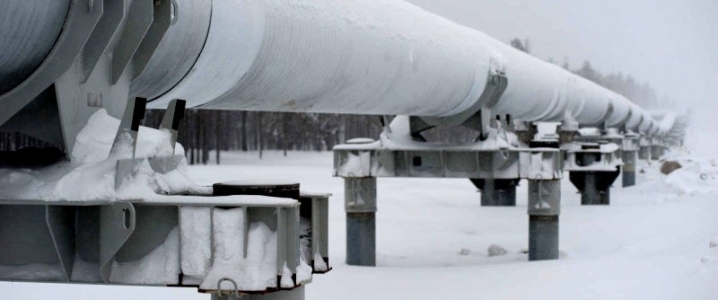Written by Viktor Katona; Originally appeared on oilprice.com
For much of 2018, the internal situation of Russia’s oil market was remarkably peaceful – no hostile takeovers and no overt antagonization. To a significant degree, this was the result of U.S./EU sanctions which have indiscriminately left all major oil companies in a somewhat constrained position. This meant they would cooperate much more willingly against external pressure rather than bickering amongst themselves. Yet events unfolding in the past few weeks point to the possibility of a clash between ministerial offices in lengthy judicial battles. Rosneft is, as usual, involved in these developments, while Transneft is on the other side of the court.
First let’s analyze the two companies involved. Both are under the control of the Russian government – albeit to a different extent (the Russian state owns 78.55 percent of Transneft and 50 percent + 1 share of Rosneft). Both are controlled by people quite close to the Russian President Vladimir Putin, therefore, at least in principle, should count as equidistant to political decision-making authorities. Yet the similarities pretty much end there – Transneft’s actions are controlled and dictated by the Anti-Monopoly Service, whilst Rosneft can act freely, be it in cases of investing in a new endeavor or crashing the Russian ruble with one of its currency machinations. Controlling 46 of Russian crude production (as of December 2018), Rosneft is by far the most newsworthy Russian company, to put it mildly.
The first official shot in the Rosneft-Transneft standoff was fired in early 2017 when Rosneft and its newly acquired subsidiary Bashneft filed a claim against Transneft for process losses during pipeline transportation. In it, Rosneft stated that up to 0.7 million tons of crude were illegally misappropriated by Transneft – although other producers were roughly on equal footing and lost 0.13-0.15 percent of the crude transported, no one apart from Rosneft took the issue to court. The second point of contention emerged shortly thereafter when Transneft started to complain about deliberately low pipeline transportation tariffs (which supposedly were set by the Russian authorities with substantial backing, or lobbying you might say, from Rosneft) – instead of the 692 RUB per ton suggested by Transneft, the 2017 tariff was set by the Federal Anti-Monopoly Service (FAMS) at 399 RUB per ton.
Rosneft was the only oil-producing major to refuse to sign a transportation contract with Transneft for quite some time, supposedly in a bid to carve out personal preferences. In the end, thanks to the mediation of the Russian Energy Ministry, the sides managed to resolve the case with a multi-faceted out-of-court settlement. Transneft vowed to bring down process losses to a level of approximately 0.1 percent by 2020, whilst Rosneft agreed to stick to the Russian process loss calculation standard and signed the 2017 transportation tariff agreement, reportedly on the same basis as every other Russian company did. In the end Rosneft did pull off a tour de force late 2017 when FAMS lowered the Russia-China tariff via Kazakhstan by 16.7 percent, even though all the other pipeline tariffs in Russia and Kazakhstan rose.
The latest confrontation took place just two to three weeks ago when Transneft signaled that it would seek damages from Rosneft due to the latter’s non-performance on using the new 8mtpa pipeline to its Komsomolsk Refinery in Russia’s Far East. The transportation company calculated that maintaining the pipeline in an idle condition from April 2018 to the current day cost it 1.5 billion rubles (roughly 25 million USD). Moreover, Transneft built the pipeline in a hurry and now its final ownership structure as well as its tariff regulation is still not settled. Rosneft stated that if it is to take part in the financing of the pipeline, it would want to take respective ownership of the pipeline.
One way or another, the underlying current in all the above-mentioned cases was Rosneft’s discontent with having to deal with a pipeline operator other than itself. This resentment has now finally emerged in public, with Rosneft pushing for a federal law amendment that would allow oil companies to own trunk oil and product pipelines. This might come across as a banality for the U.S. reader, yet amounts to a revolution in Russia, given that all the trunk pipelines are owned and operated by Transneft (companies only deal with tie-ins from and to those trunk pipelines). The proposal was already discussed when Dmitry Kozak, deputy prime minister in charge of supervising the oil sector, convened a meeting with representatives of relevant ministries, yet the meeting reached no consensus on the topic.
Testifying to the complexity of managing an oil sector in which monopolies antagonize to become ever-powerful, the federal law on the trunk pipeline transportation of crude oil and oil products is still obscure. Its first edition was prepared in July 2015 by the Russian Ministry of Energy, however, heretofore it was stalled pretty much everywhere it could be. After Rosneft’s ambitious move to rewrite the rules of the Russian energy game, any decision on the law would be pushed further back in time. Now the Ministry says discussions will continue in January, yet those talks would be anything but pleasant.
The latest row would most likely result in yet another Ministry-brokered truce. Moreover, once adopted, the federal law is generally expected to bring about an important distinction – it would differentiate between public and non-public pipelines. The former would remain Transneft-operated and would include all the major transportation conduits – ESPO, the trunk pipelines to Russia’s ports in the Baltic and Black Seas, as well as the Druzhba pipeline. The latter would comprise, as the name suggests, those that serve a single purpose for one exclusive partner – tie-ins from and to large production clusters of a particular company or single-use connections to refineries. The Komsomolsk Refinery is one such example – the tie-in has no other use than to connect it to the ESPO pipeline. Go figure who would be to profit from this.






